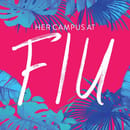This past summer, I visited my birthplace for the 10th time. As I entered a museum, seeking to learn about the history of the island, I was told that my admission fee was $1 instead of a peso because I was not, in fact, Cuban. The museum employee made this assumption based on the way I replied in English, “okay,” to being told where to put away my backpack: “tu no eres Cubana (you are not Cuban).”
The sociocultural implications of my mother and I leaving Cuba 16 years ago have been points of reflection for me in recent years. I took an exile literature course during my freshman year of college in which I began to analyze and question what it means for my mother and me as Cubans, as people, as women, as daughters, as mothers, as now Americans, to be immigrants. I saw a fellow Cuban attempting to discredit my Cuban identity, based on my ability to speak English, as an extension of the course. How would I answer when it was someone else doing the questioning about me?
That day, I paid the $1, as an American, and enjoyed the exhibits in Spanish, as a Cuban.
My Cuban-ness is evident in the food I eat, my love for salsa (the dance), my ability to creatively make the most out of very little, my heart’s need to stay close to my family, my birth certificate, my regularly renewed Cuban passport. And yet, with just one utterance of American English, my Cuban-ness can be invalidated.
So, am I American? After all, I do love rock, country, rap, burgers, pledged allegiance to the flag from the age of six, vote for U.S. elected officials, and know the English grammar rules better than I do those of my native tongue.
It became inevitable to feel lost in the search for a definitive answer. In a world full of binaries, we’re conditioned to accepting the idea of either fully belonging to one category or not belonging at all. I didn’t know how to go about resolving my identity when I became aware of the notion that I don’t fully belong to the country I was born in, nor to the one I’ve lived in for most of my life. I know I’m not the only young immigrant in a hyphenated state, and that gave me some comfort. But did this mean that everyone else felt just as lost?
It wasn’t until I met author Donna Weir Soley that I began to feel at peace- even excited- about the matter. Dr. Soley was born in Jamaica and migrated to the United States at the age of 17. She attended high school in both countries and has written a beautiful collection of creative nonfiction that captures the essence of her and her family’s story and her quest for wholeness while living in America: First Rain. I identified with Dr. Soley when reading her poems, as a writer and as a young immigrant. Hence, I couldn’t help but ask the accomplished, seemingly confident-with-her-identity, immigrant woman in front of me how she mastered being in the in-between. In her answer, she referenced her hobby of creating beautiful broken glass mosaics. She compared hyphenated identities to the mosaics, offering a comforting outlook: just as a mosaic is made of several pieces, that may or may not go together, that may or may not be broken, we have the chance to (some might even say the privilege to) piece together parts of different cultures, countries, experiences, to create our identity. It is not a predetermined concrete answer that we are to find or be told that we are. We can be a little bit of everything and not fully anything, and still be whole.



